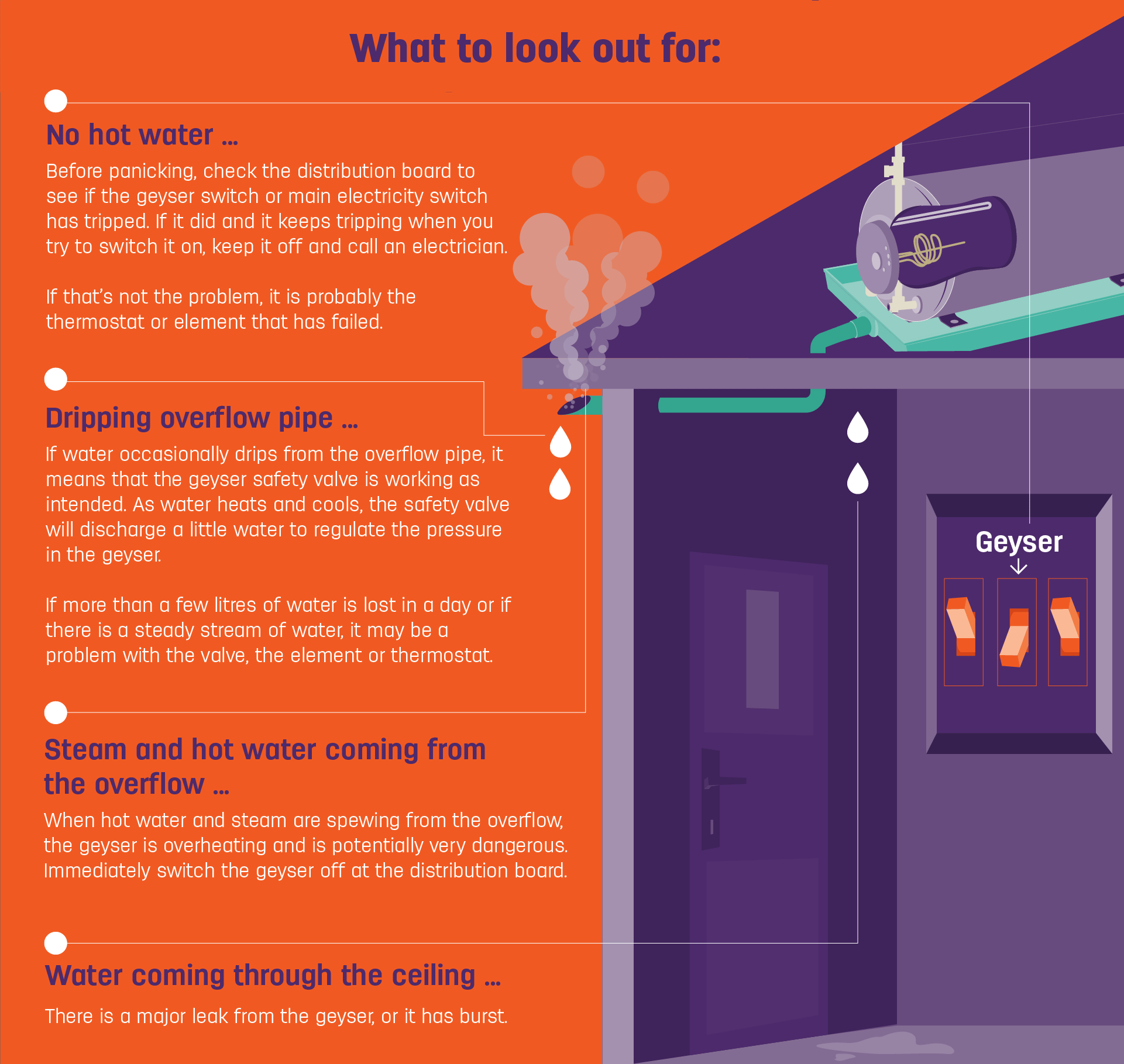
You’ve got a busy day ahead, but wake up to no hot water – or steam and hot water are pouring out of that pipe just under the roof that you’ve never noticed before. You mostly take the luxury of hot water for granted, until you don’t have any.
Although we usually don’t dwell on things that can go wrong with the geyser, the reality is that something will, at some point. Most electrical geyser manufacturers supply a warranty for the actual geyser for between five and ten years, but its individual components only carry a warranty of one to two years.
What are geyser components?
These are items that generally wear, such as thermostats, elements, pressure control valves, vacuum breakers, seals and gaskets.
When a geyser component fails, it doesn’t necessarily mean the geyser needs to be replaced. If something goes wrong with one of these components, check with your broker if your insurance policy covers it.
Most importantly, if you suspect that your geyser is leaking or has burst, report your claim to your broker so that they can appoint a qualified plumber to see the problem. If you don’t, you may find yourself out of pocket due to limits on your policy when not using an approved plumber.


Did you know?
- The most cost-effective temperature to keep your geyser at is 60 to 65 degrees Celsius.
- Going away for two days or longer? Then turn your geyser off. Switching your geyser on and off regularly will not harm your geyser, but turning it off for short periods has a negligible effect on your electricity bill.
Are you following us on Twitter and LinkedIn for real-time updates?